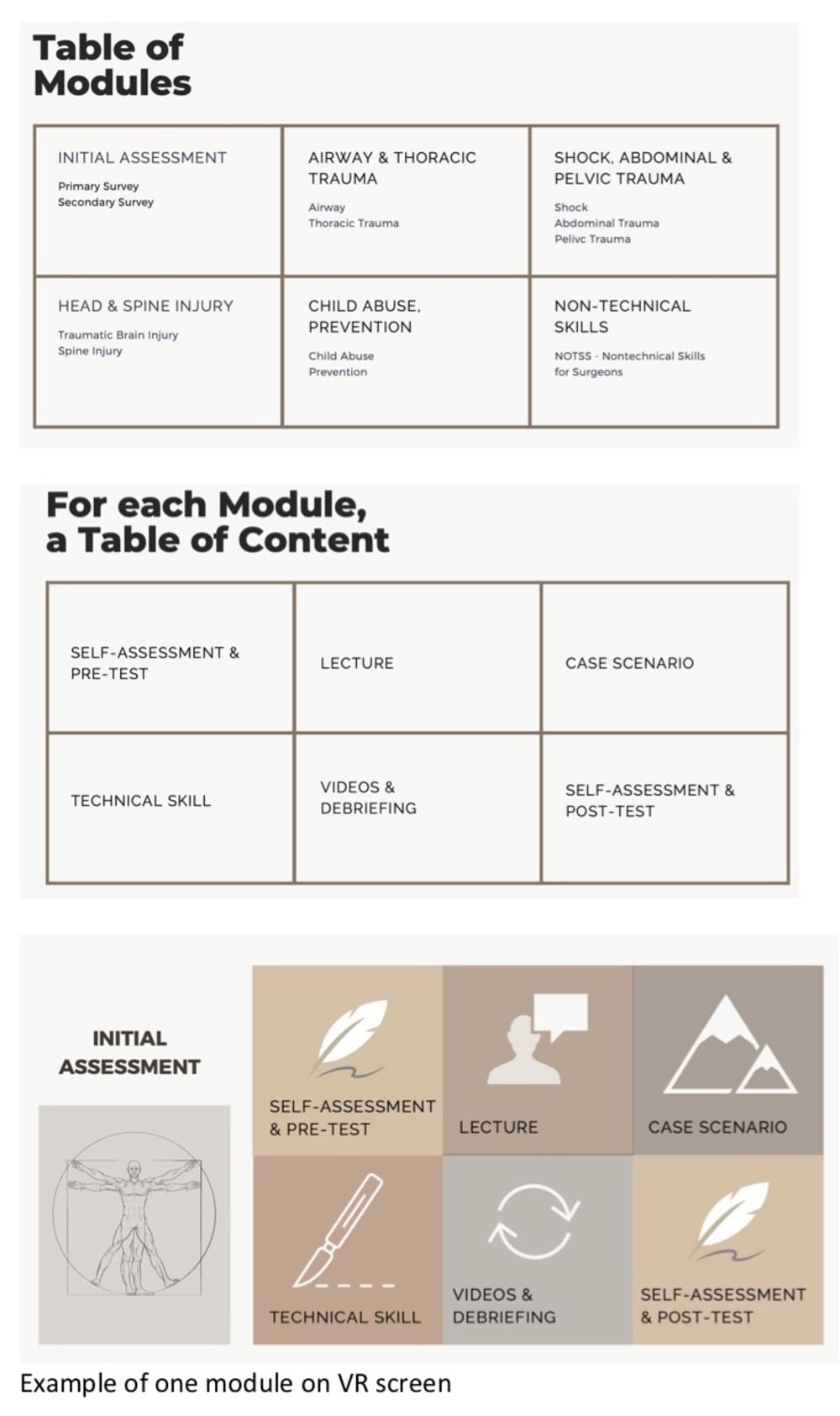Problem:
Pediatric trauma represents a leading cause of children's mortality and disability worldwide, killing over one million children each year. Current education programs rely on expensive simulated courses. Therefore, they fail to train health providers on a large scale leaving inadequate training and the inability to provide the best care for injured children, increasing morbidity and mortality. Only 34% of the essential steps of a pediatric trauma assessment are completed in a reference general trauma center in a middle-income country. And more than 80% of health professionals demand better pediatric trauma education.
Innovation:
For the first time in health sciences education, we want to switch the classic passive learning of pediatric trauma in classrooms to a virtual reality (VR) environment. In our project, the students will interact with other professionals as a team from various places of the world; they will be immersed in realistic scenarios, taking care of injured children while the parents are anxious around them. It will be an excellent opportunity to train technical skills and improve non-technical skills - such as leadership, communication, decision-making, and situational awareness. Consequently, healthcare providers will practice their pediatric trauma technical skills while enhancing their skills as team members, fostering interprofessional education.
Feasibility
VR is more scalable and maintainable than other technologies and scored the best in feasibility among other technologies for medical training in our last scoping review. Despite these benefits of VR, the standard emergency educational programs still use high-fidelity physical mannequins to simulate scenarios. These mannequins are expensive to produce, maintain, and are limited, reproducing few case scenarios.
Based on another scoping review we conducted, pediatric trauma courses were restricted to specific centers in higher-income countries and inaccessible in low-resource settings. The money invested in training only sixty students with the prevailing educational programs could build our VR platform.
Marketability
We intend to make our course available for computers, smartphones, and VR devices. Even with the smartphone, the student could experience the platform with VR cardboard devices, making our product scalable and accessible. Potentially, every health provider with an internet connection could be a user. The other target public will be the simulation labs that could afford a version of the course for VR devices, offering the program better digital quality. Currently, around 12,000 physicians do an in-person general trauma course per year.
Significance
Sixty million injured children visit emergency rooms each year. Our product design will make pediatric trauma training accessible and affordable, resulting in better trauma care to these children worldwide and sparing thousands of children's lives.
Video
Like this entry?
-
About the Entrant
- Name:Fabio Botelho
- Type of entry:teamTeam members:Fabio Botelho (team leader)
Dan Poenaru
Elena Guadagno
Michelle Cwintal
Parsa Bandamiri
Hamed Ranjbar
Mohsen Amoei - Patent status:none

